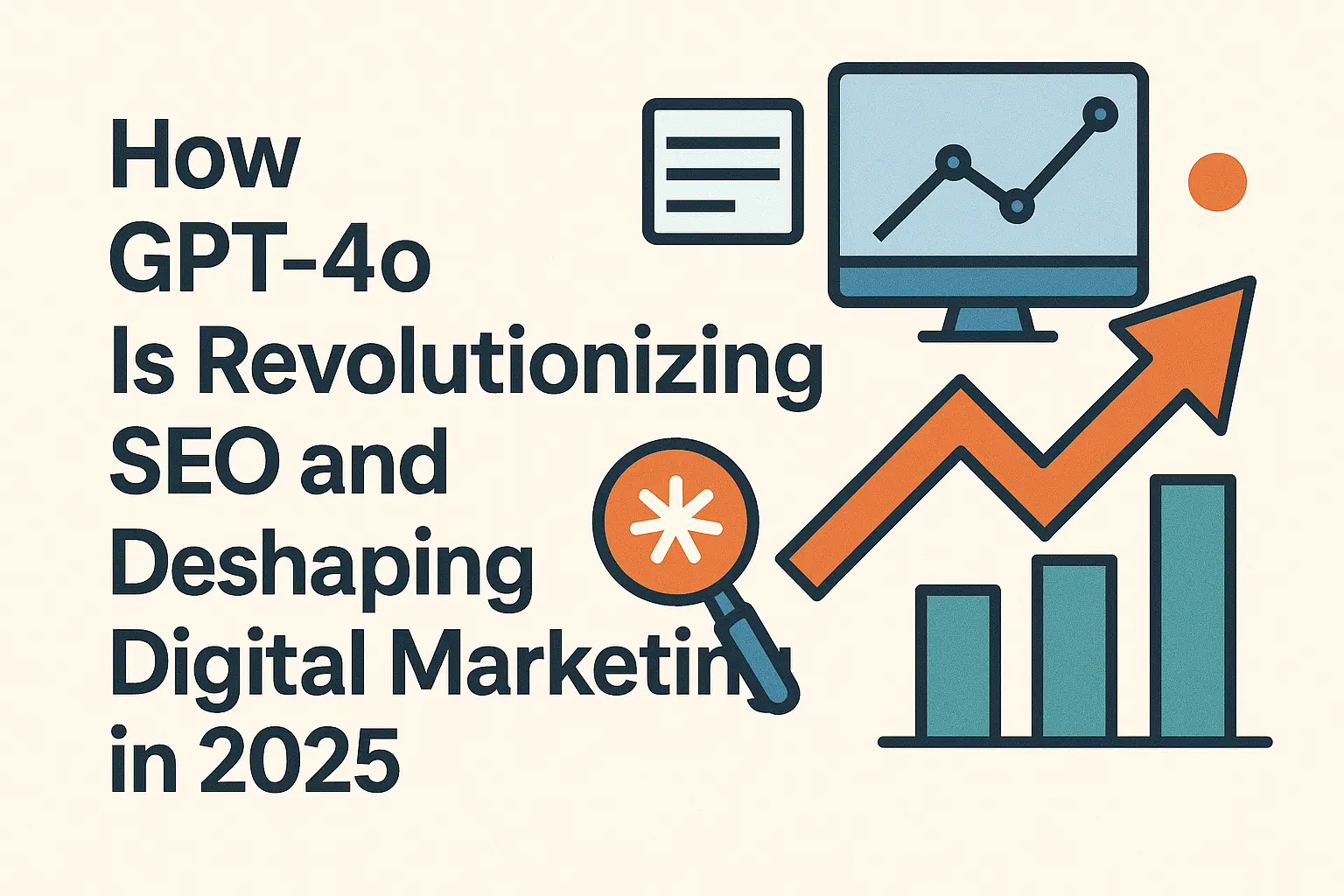In the rapidly evolving digital landscape, staying ahead in SEO is no longer about just keywords or backlinks—it’s about intelligence. Artificial intelligence (AI), especially OpenAI’s GPT-4o, is transforming how businesses approach search engine optimization, content marketing, and user engagement.
As we enter a new era of AI-powered marketing, understanding how GPT-4o works and how it influences SEO strategy is essential for any brand aiming to stay relevant.
What Is GPT-4o and Why Does It Matter for SEO?
GPT-4o, released by OpenAI in 2024, is a multimodal large language model capable of understanding and generating text, images, audio, and code. The “o” stands for “omni”—reflecting its ability to handle multiple types of input simultaneously.
Unlike its predecessors, GPT-4o:
– Responds in real-time (up to 10x faster)
– Has a more natural conversational tone
– Understands context across media (e.g., voice + text)
– Offers deeper semantic understanding for more precise outputs
This innovation is a game-changer for SEO because it redefines how content is created, optimized, and consumed.
1. Semantic SEO: The Death of Keyword Stuffing
**Old SEO:** Relied heavily on exact-match keywords for rankings.
**New SEO with GPT-4o:** Prioritizes semantic relevance and context.
What GPT-4o Enables:
– Focus on user intent over keyword density
– Usage of synonyms and natural phrasing
– Content that addresses real queries, not just phrases
Example:
Instead of optimizing only for “best running shoes,” consider queries like:
– “What are the most durable running shoes for trails?”
– “Running shoe recommendations for flat feet.”
LSI Keywords: performance running shoes, trail footwear, motion control shoes, runner’s foot health
2. AI-Generated Content: Quality at Scale
GPT-4o enables the creation of high-quality content across multiple formats—blogs, FAQs, product descriptions, and scripts.
Benefits:
– Faster content production
– Uniform tone and brand voice
– Ability to build topic clusters and pillar pages
SEO Impact:
Google’s Helpful Content Update supports AI-generated content if it is:
– Useful
– Original
– Aligned with search intent
Pro Tip: Don’t publish raw AI output. Use GPT-4o as a content assistant, not a replacement.
3. Voice Search Optimization: Natural Language Wins
With GPT-4o’s real-time voice capabilities, optimizing for voice search is more important than ever.
Over 50% of smartphone users use voice search daily.
Shift in Query Style:
– Before: “Italian restaurants NYC”
– Now: “Where can I find a good Italian restaurant near Times Square that’s open late?”
Optimization Guidelines:
– Structure content with FAQs, headers, and schema markup
– Use natural, conversational language
– Address the who, what, when, where, why, and how
4. AI in Search: The Rise of AI Overviews and SGE
Google’s Search Generative Experience (SGE) uses AI to summarize search results—often before the user clicks.
SEO Challenges:
– Lower click-through rates for traditional blue links
– Higher competition to appear in the AI Overview box
Optimization Tips:
– Use clean HTML and structured content
– Cite authoritative sources
– Target featured snippets and “People Also Ask” sections
5. Smarter Keyword Research with GPT-4o
GPT-4o enhances keyword research through AI-generated insights and intent-driven clusters.
Features:
– Suggests long-tail keywords
– Clusters keywords by user intent
– Predicts buyer journey stages
Instead of targeting only high-volume keywords, use GPT-4o to build semantic content hubs that boost dwell time and topical authority.
6. AI-Powered User Experience and Engagement
GPT-4o powers intelligent user experiences by enabling:
– Conversational chatbots
– Personalized content recommendations
– Predictive search and guidance
SEO Relevance:
Google measures user signals like bounce rate and dwell time. Better engagement = better rankings.
Use GPT-4o to create:
– Interactive guides
– Conversational Q&A sections
– Personalized landing experiences
7. Technical SEO Meets AI Automation
GPT-4o automates many technical SEO tasks, including:
– Meta tag generation
– Internal link mapping
– Schema markup creation
– URL structure planning
It also powers tools that:
– Analyze page speed and mobile performance
– Suggest A/B testing improvements
– Auto-generate alt text and accessibility tags
8. The Shift from Clicks to Conversations
SEO is evolving beyond clicks—engagement is the new metric.
GPT-4o can transform your website into a conversational platform where:
– Chatbots guide users through buying decisions
– Pages respond to queries in real time
– Search becomes interactive, not static
Case Study:
A Shopify store using GPT-4o-powered recommendations saw a 34% increase in conversions within 2 months.
9. Ethics, E-E-A-T, and AI Transparency
Google’s E-E-A-T framework (Experience, Expertise, Authoritativeness, Trustworthiness) applies to AI content too.
How to Build Trust with GPT-4o:
– Add author bios to AI-assisted blogs
– Include source citations
– Disclose AI involvement transparently
Google rewards content that is:
– Factually accurate
– Reader-first
– Reviewed by human experts
10. Future Outlook: GPT-5 and Beyond
GPT-4o is the foundation, but the future promises even more:
– Real-time integration with live search
– Advanced multilingual and localized SEO
– Stronger multimodal outputs (voice + image + text)
Your Opportunity:
Now is the time to invest in:
– Smart, AI-powered content pipelines
– Semantic-first SEO strategies
– Interactive, optimized user experiences
Actionable Takeaways for Digital Marketers
Here’s how to leverage GPT-4o in your SEO and digital marketing strategy:
1. Embrace semantic content—move beyond keyword stuffing
2. Humanize AI output—edit for clarity and relevance
3. Use GPT-4o tools for meta tags, linking, chatbots, and structure
4. Optimize for voice search and AI snapshots like SGE
5. Disclose AI usage and build credibility with human oversight
By harnessing the power of GPT-4o, marketers in 2025 can redefine SEO, enhance digital engagement, and future-proof their content strategies for the AI era.


